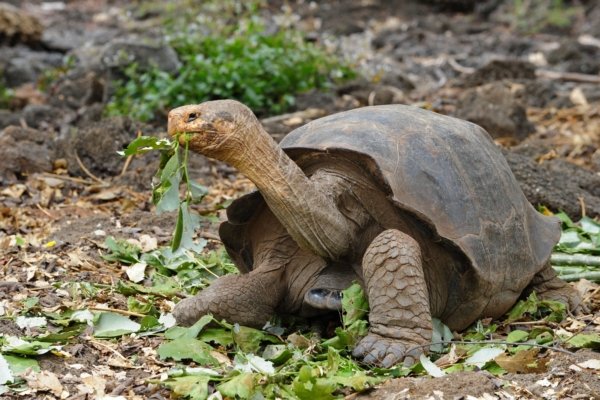Recently, a 100-year-old endangered Galápagos tortoise at the Philadelphia Zoo hatched four baby turtles, becoming a new mom at a ripe old age. This marks the first successful breeding of endangered tortoises at the zoo in its 150-year history, bringing immense joy to the staff.
In a press release issued on April 3rd, the Philadelphia Zoo highlighted that the parents of these four baby turtles are the female “Mommy” and the male “Abrazzo.” They are the oldest animals at the zoo, both around 100 years old.
“Mommy” has been a resident at the zoo for over 90 years. She belongs to the endangered Western Santa Cruz Galápagos tortoise species, a subspecies of the Galápagos tortoise native to the Galápagos Islands.
The newly hatched baby turtles, with the first one hatching on February 27th, are currently under the careful watch of the zoo staff. They are eating and growing normally, weighing between 70 and 80 grams each (approximately the weight of an egg).
On April 23rd, these baby turtles will make their public debut. It coincides with the 93rd anniversary of their mother “Mommy” arriving at the zoo.
Philadelphia Zoo CEO Jo-Elle Mogerman expressed in the press release, “This is a significant milestone in the history of the Philadelphia Zoo, and we are thrilled to share this news with our city, region, and the world.”
She mentioned that “Mommy” arrived at the zoo in 1932, meaning that anyone who has visited the zoo in the past 92 years may have seen her.
Mogerman added, “The vision of the Philadelphia Zoo is that, in 100 years, these baby turtles will become part of a thriving population of Galápagos tortoises on our healthy planet.”
The zoo reported that “Mommy” laid 16 eggs in November 2024, which were artificially incubated by the caretakers. The gender of the turtles is determined by the incubation temperature, with temperatures below 82.4 degrees Fahrenheit (28 degrees Celsius) resulting in males and temperatures above 85.1 degrees Fahrenheit (29.5 degrees Celsius) resulting in females. Currently, all successfully hatched turtles are females.
“Abrazzo” moved to the zoo in 2020 from the Riverbanks Zoo and Garden in South Carolina and was later paired with “Mommy” for reproduction. Since 2023, “Mommy” has laid a total of four clutches of eggs, but the first three were unsuccessful.
In the Species Survival Plan of the Association of Zoos and Aquariums, “Mommy” is considered one of the most genetically valuable Galápagos tortoises, and she is the oldest new mom among the Western Santa Cruz Galápagos tortoises.
Galápagos tortoises are the largest existing land turtles, with males reaching weights up to 500 pounds (227 kilograms) and females averaging around 250 pounds (113 kilograms). They are cold-blooded animals, spending an hour or two basking in the sun daily, followed by eight to nine hours of grazing and relaxation. Scientists estimate their lifespan to be between 100 and 200 years.
Once tortoises reach adult size, their age cannot be accurately determined, so many tortoises’ ages are only estimated. The oldest known Galápagos tortoise, Harriet, lived until the age of 175 at the Australia Zoo.
Throughout the 19th century, Galápagos tortoises were considered a food source by sailors. These land turtles could survive for months on ships without food or water, making them an ideal source of meat for sailors on long voyages. A single ship could capture hundreds of them, nearly leading to their extinction.

